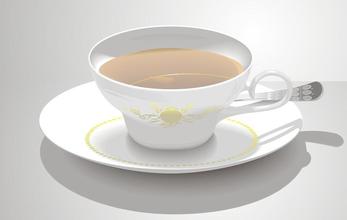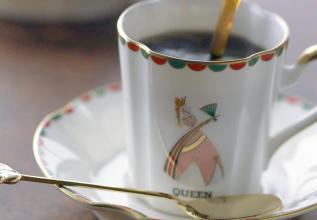Characteristics of flavor and taste in Nicaraguan coffee producing areas introduction to boutique coffee bean manor
The word Managua comes from the Nahual language of the Indians and has two meanings, one is "Mexican place" and the other is "water side". About 10,000 years ago, there was human activity on the banks of Managua Lake, and traces of ancient human activity can be seen from the ruins of Akolink. Due to natural disasters such as earthquakes, residents have moved many times. When the Spanish conquered Nicaragua in the early 16th century, it was still an important Indian town. It became a city in 1846. In 1852 it was designated the capital of the Republic. Since then, it has become the political center of the country. The national flag of Nicaragua was launched on August 27, 1971. The national flag is rectangular and the ratio of length to width is 5:3. The flag consists of three parallel rectangles, blue, white and blue, from top to bottom. It has a national emblem in the center. The colors of the flag are derived from the original flag of the Central American Federation and also symbolize the country's geographical position between the Pacific Ocean and the Caribbean Sea.
Nicaragua coffee is one of the best in the world. It is mild and delicious, medium-sized and very aromatic. In many countries coffee production has been severely affected for political reasons. The coffee industry in Nicaragua is no exception. The revolution of 1979 forced coffee growers to flee to Miami. A period of uncertainty ensued as the Government considered whether to reallocate land, including many plantations, resulting in a shortage of coffee supplies and a decline in production from more than 1 million bags in the early 1970s to less than 600,000 bags in 1990. Now that the government has liberalized the coffee industry, private owners control the market. The best Nicaragua coffee is grown in the north and centre of the country, with the best coffee grown in Jinotega, Matagalpa and Nuevo Segovia. The best Nicaragua coffee falls into the category of Central Estrictamendte Altura coffee, which is very pleasant with moderate acidity and aroma. The poorer quality beans are widely used in coffee blends. Lake Nicaragua is the largest lake in Central America and is located in the southwest of Nicaragua. Native Indians call it Lake Cosivolca, which means "fresh water sea." Lake Nicaragua is 160 km long, 60 km wide on average and covers an area of 8264 km2. Tens of thousands of years ago, Lake Nicaragua was a bay in the Pacific Ocean, isolated from the sea by volcanic eruptions. With the passage of the sun and the moon, the lake water gradually diluted and became a fresh water lake. Fish living in the lake have adapted to the desalination and survived. At the beginning of the 21st century, there are still thousands of sharks, swordfish and sea carp in the lake. It is said that Lake Nicaragua is the only freshwater lake in the world where saltwater fish breed and inhabit.
At the beginning of the 21st century, the Pacific Ocean was connected to Lake Nicaragua by a 19-kilometre isthmus, in which water depths varied from 23 to 70 metres. The lake flows through the San Juan River into the Caribbean Sea. The Tipitapa River is connected to Lake Managua in the northwest.
Nicaragua lake has more than 300 islands, the smallest is only a few hundred square meters, the largest island is the island of Ometpe, 26 kilometers long, 13 kilometers wide, an area of more than 300 square kilometers, the island has two volcanic cones, one of which is 1610 meters high, there are many Mayan cultural relics on the island.
Water birds gather on the lake, and the lake is rich in all kinds of saltwater fish, including crocodiles, sharks, sea turtles, etc. Sharks swim to the lake along the San Juan River from the Caribbean Sea, so swimming is prohibited in Nicaragua Lake.
Watching large and small groups of turtles climb the reef to bask in the sun is a scene by the lake. Nicaragua lakeshore tree-lined, many red-topped pavilions dotted with blue water, lake wind blowing, water birds flying, fish jumping out of the water from time to time, that blue sky, white clouds, water light, lake color constitute a charming scenery. At the beginning of the 21st century, the beautiful Lake Nicaragua and Masaya Volcano have become the two famous landscapes of Nicaragua.
Great Wall of Nicaragua
The Great Wall of Nicaragua is located 150 kilometers west of Managua, the capital of Nicaragua. It was originally a boundary marker between Indian tribes. It also has certain defense functions, with a total length of 40 kilometers

Important Notice :
前街咖啡 FrontStreet Coffee has moved to new addredd:
FrontStreet Coffee Address: 315,Donghua East Road,GuangZhou
Tel:020 38364473
- Prev

Introduction of Salvadoran Coffee Variety and Flavor description characteristics of producing area introduction of high-quality coffee beans
The city of El Salvador has a large number of 16th-century buildings and religious buildings, many of which are decorated with 17th-and 18th-century carvings and stripes made of colored mud, reflecting the characteristics of the colonial period. Its overall characteristics are described through a forest of monuments and consistent ideas. All this shows that El Salvador is a city with a suitable structure for the colony.
- Next

Kenyan coffee varieties with strong taste introduction to the characteristics of fine coffee beans in manor
1. Coffee contains certain nutrients. Nicotinic acid in coffee contains vitamin B, which is higher in roasted coffee beans. And there are free fatty acids, caffeine, tannic acid and so on. two。 Coffee is good for the skin. Coffee can promote metabolic function, activate digestive organs, and has a great effect on constipation. Taking a bath with coffee powder is a kind of thermotherapy, which has the effect of losing weight. 3. There is coffee.
Related
- Detailed explanation of Jadeite planting Land in Panamanian Jadeite Manor introduction to the grading system of Jadeite competitive bidding, Red bid, Green bid and Rose Summer
- Story of Coffee planting in Brenka region of Costa Rica Stonehenge Manor anaerobic heavy honey treatment of flavor mouth
- What's on the barrel of Blue Mountain Coffee beans?
- Can American coffee also pull flowers? How to use hot American style to pull out a good-looking pattern?
- Can you make a cold extract with coffee beans? What is the right proportion for cold-extracted coffee formula?
- Indonesian PWN Gold Mandrine Coffee Origin Features Flavor How to Chong? Mandolin coffee is American.
- A brief introduction to the flavor characteristics of Brazilian yellow bourbon coffee beans
- What is the effect of different water quality on the flavor of cold-extracted coffee? What kind of water is best for brewing coffee?
- Why do you think of Rose Summer whenever you mention Panamanian coffee?
- Introduction to the characteristics of authentic blue mountain coffee bean producing areas? What is the CIB Coffee Authority in Jamaica?

